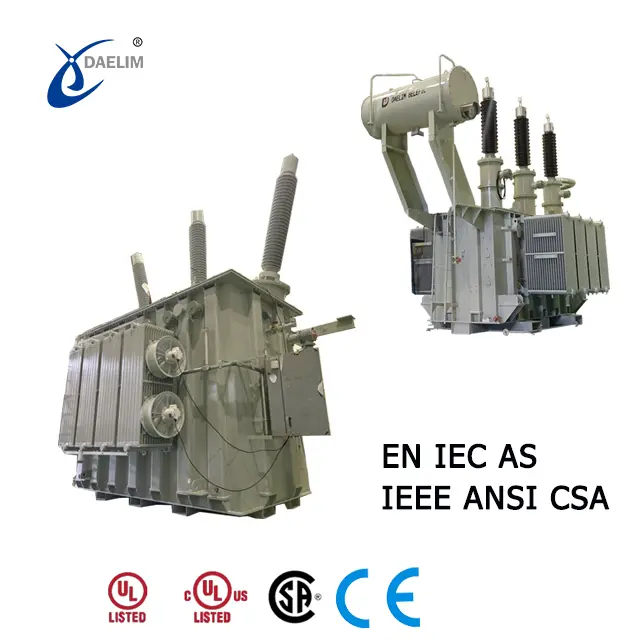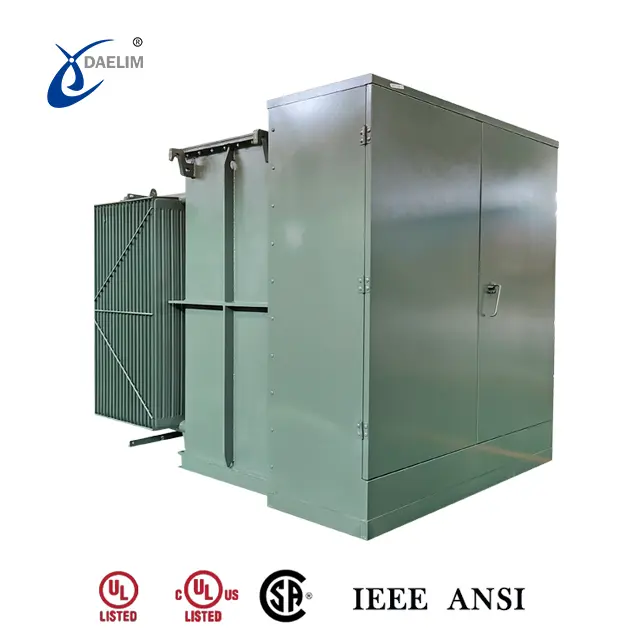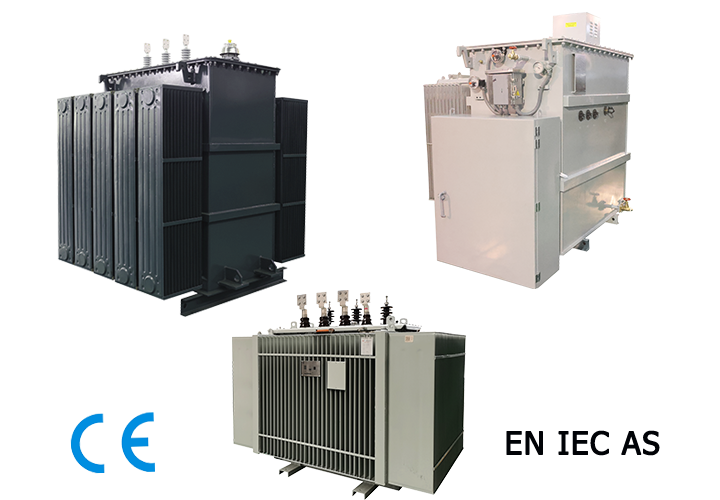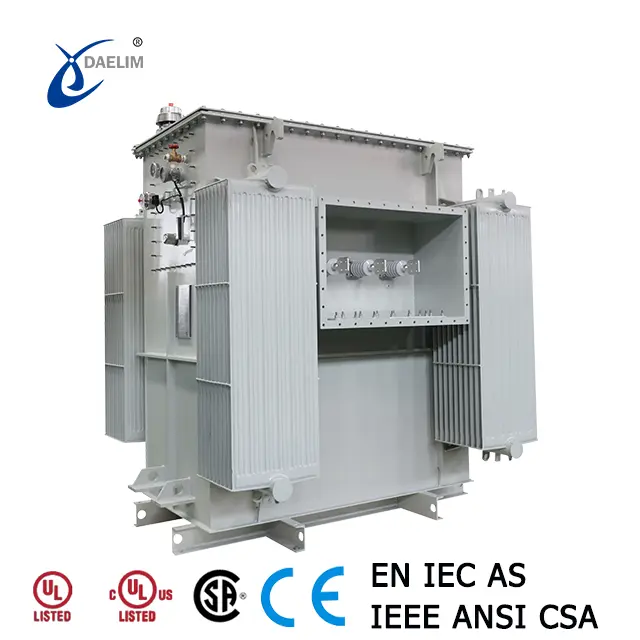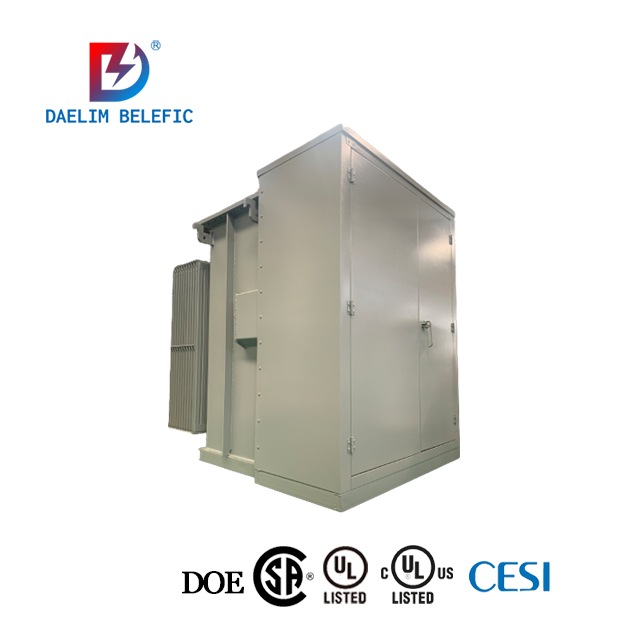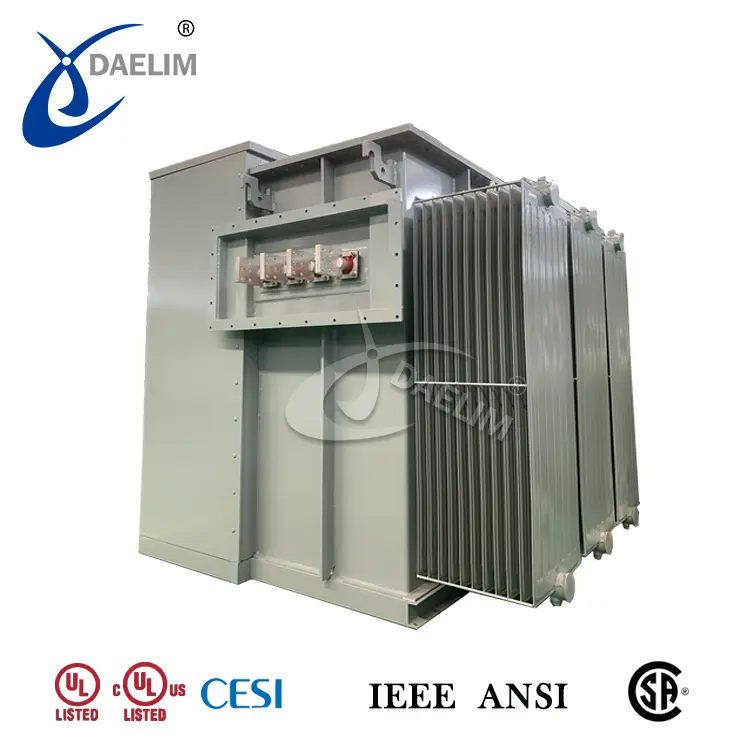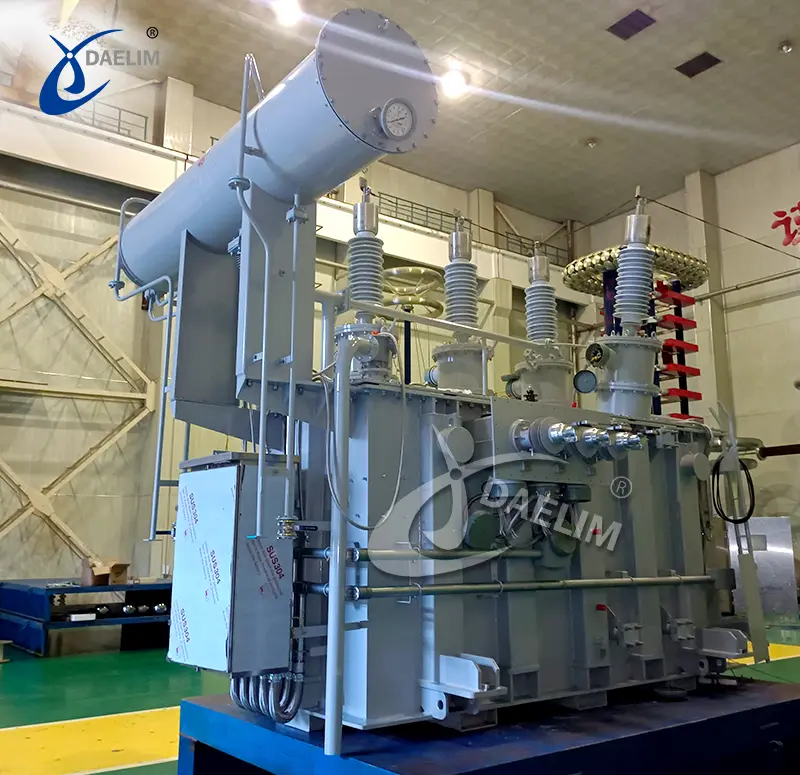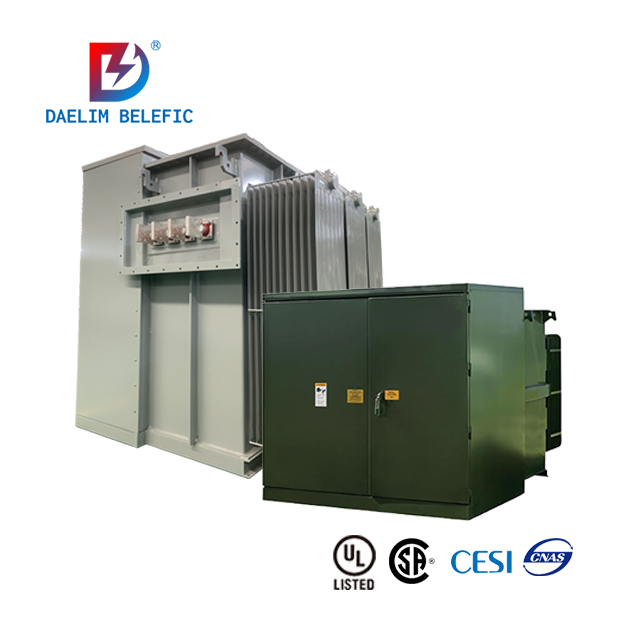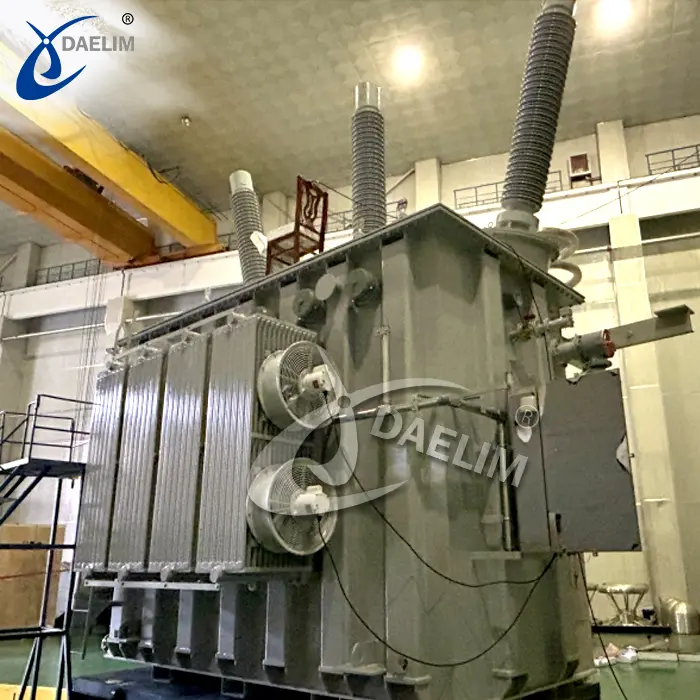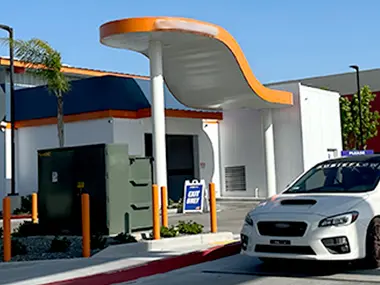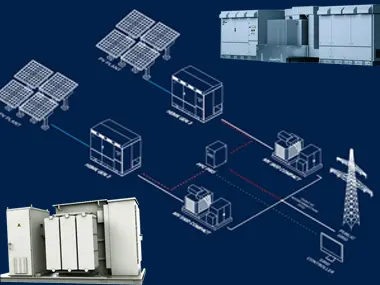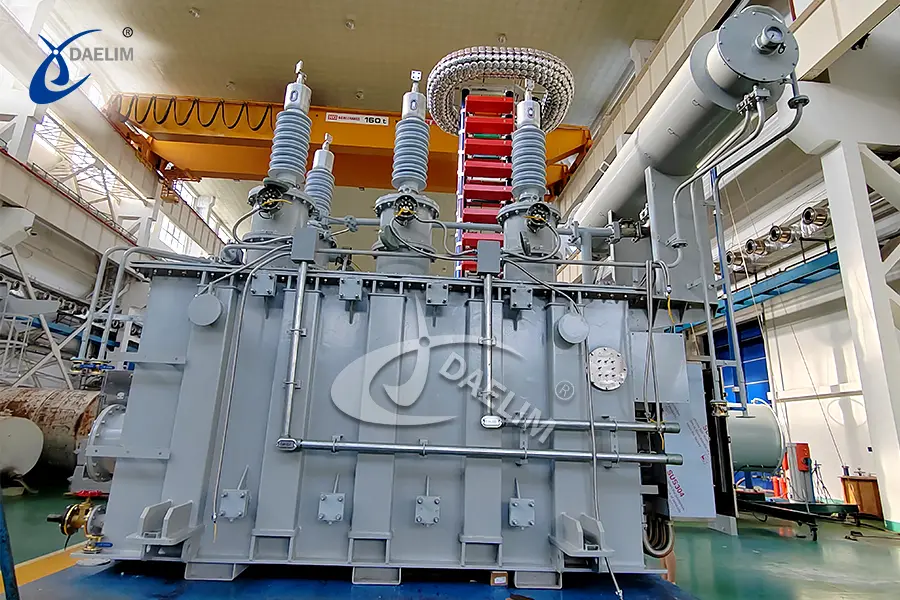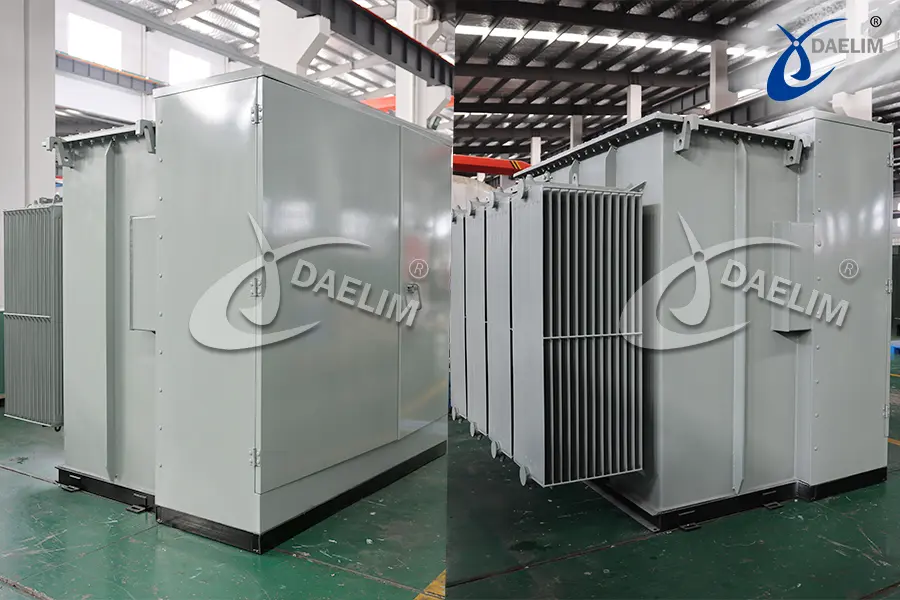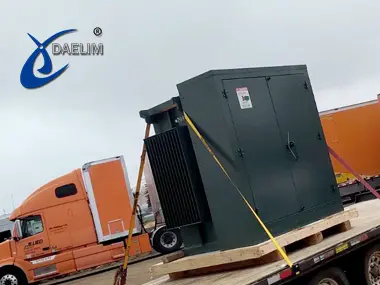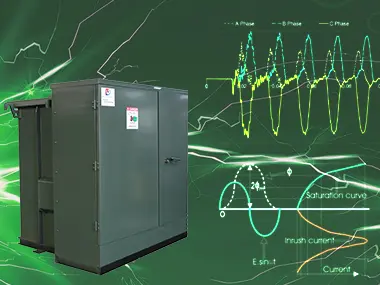Selection of Transformer Types for Photovoltaic Power Plants
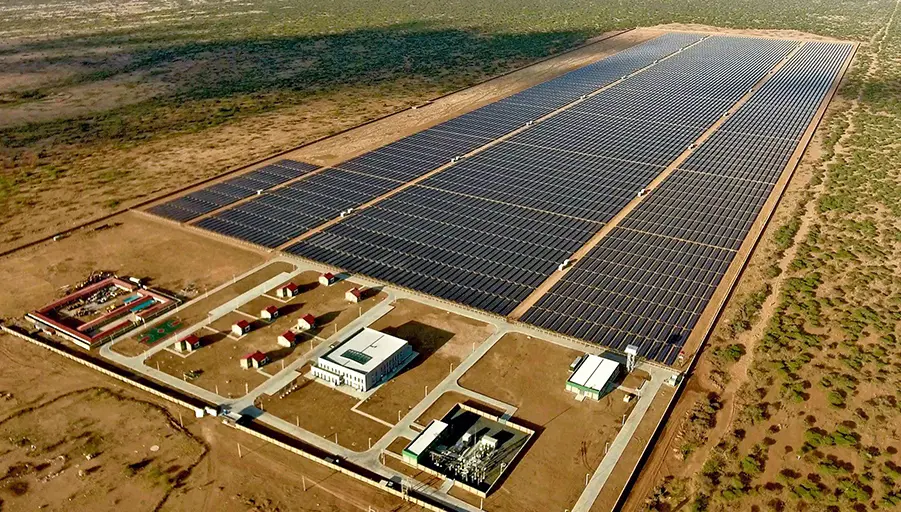
Photovoltaic (PV) power generation is a widely utilized renewable energy method across the globe. Unlike conventional thermal power generation, the load characteristics of PV power plants are distinct, necessitating specific requirements for transformers. Transformers are essential in PV power plants for boosting voltage and connecting to the grid before transmitting electricity. Unlike the distribution transformers commonly used in power grids, the primary function of these transformers is to step up voltage.
Contact Daelim TransformerPV power plants need to consider various factors such as environmental impact, cost, fire prevention, and safety. Typically, vegetable oil transformers are preferred due to their ability to withstand higher temperature rises, longer insulation life, superior fire resistance, minimal environmental pollution, and ease of maintenance.
As a professional transformer manufacturer, Daelim Transformer has supplied thousands of transformers for numerous PV power plant projects across America, Europe, and Australia. Our product range includes Pad Mounted Transformers, Substation Transformers, Eco-Transformer Tier 2, and HV Power Transformers. Notably, our vegetable oil transformer solution offers a maximum capacity of 180 MVA and voltage up to 230 kV.
Daelim Transformer's designs for PV power plants adhere to or exceed standards such as IEEE, NASI, CSA, IEC, AS, BS, and more. In addition to providing high-quality transformer solutions, we offer a professional after-sales and maintenance team to address any concerns, ensuring continuous and reliable support for our customers.
Load Characteristics of Photovoltaic Power Plants
PV power plants experience variable loads, peaking during midday when solar irradiance is highest. Under similar conditions, liquid-immersed transformers using natural esters (vegetable oil) exhibit higher heat resistance levels than mineral oil transformers. According to Appendix C in IEC 60076-14/GB1094.14, vegetable oil can enhance the insulation system's heat resistance from 105℃ to 120℃ without changing the insulating paper. This improvement translates to a lifespan more than four times that of mineral oil-based systems, making vegetable oil transformers more economical over their full lifecycle.
More Resouces: What is the difference between the mineral oil and vegetable oil?
Economic Considerations
The higher temperature rise limit of vegetable oil transformers allows for the use of smaller transformers compared to their mineral oil counterparts. Given that PV power stations reach maximum load only during noon, a smaller vegetable oil transformer can suffice as long as the temperature rise remains within acceptable limits. Despite higher initial costs, the overall expenditure may be lower due to the smaller required capacity. Moreover, the high-temperature tolerance permits temporary overloading during peak periods without compromising the transformer's longevity, provided the overload losses are evaluated and managed.
Environmental Advantages
Vegetable oil transformers are significantly more environmentally friendly. Their biodegradation rate is nearly 100%, imposing no environmental burden and posing no toxicity risk to living organisms. These transformers align with global carbon emission reduction strategies, emitting only 1/64th the carbon dioxide of mineral oil transformers throughout their lifecycle. This environmental compatibility complements the green nature of PV power generation.
Fire Safety and Prevention
Fire safety is paramount in transformer operation, particularly in remote PV power plant locations. The ignition point of transformer oil is crucial, with the International Electrotechnical Commission categorizing oils with flash points above 300°C as K-class insulating liquids, known for high fire resistance. Vegetable oil, with a flash point >300°C and an ignition point >350°C, far exceeds the safety standards of mineral oil, significantly reducing fire and explosion risks. Notably, there have been no recorded incidents of vegetable oil transformer fires, underscoring their superior safety profile.
Conclusion
In summary, the selection of transformer types for photovoltaic power plants should prioritize vegetable oil transformers due to their numerous advantages. These include enhanced heat resistance, economic benefits over their lifecycle, superior environmental compatibility, and exceptional fire safety. These attributes make them the optimal choice for modern PV power generation, supporting the industry's sustainability and safety goals.
More Resouces:
Solar Transformer - Your ultimate guide
Related Products
Related Article
Guide to EV(electric vehicle) Charging Station Transformers
As vital components supplying power to charging stations, transformers play a crucial role in facilitating the swift, efficient, and safe replenishment of electric vehicles. Today's article primarily discusses the types of transformers utilized in charging stations, their design features, how to choose a transformer supplier, and other pertinent issues.
MV Skid Compact, Premier Choice for Utility-Scale Solar and Energy Storage
MV Skid Compact represents the pinnacle of cost-effective solutions for Utility Scale Solar and Energy Storage projects. It seamlessly integrates MV transformers, inverters, and medium voltage switches into a single unit, facilitating swift and hassle-free deployment. By consolidating these essential components, MV Skid Compact drastically reduces civil engineering requirements and on-site installation and commissioning times.
Canadian 69 kV Substation Transformer Project
Today, we are excited to present a case study on a 69 kV substation transformer project by Daelim Transformer. Our Canadian client required a step-down transformer for their substation to connect with the hydroelectric grid in Quebec.
Pad Mounted Transformer for BESS System 4.0 MVA in Riverside County, California
Today, Daelim Transformer is proud to introduce a pad-mounted transformer for a 4.0 MVA Battery Energy Storage System (BESS) project located in Riverside County, California. The transformer is meticulously crafted to comply with the specifications outlined in the California Electrical Code Article 450.
How Do You Choose a Transformer Size You Need?
In this article, we will give you a quick step-by-step guide on how to choose the right transformer size. We will also take a look at the things you need to consider and the transformer calculations involved.
How To Manage Transformer Inrush Current?
In this article, we will tackle inrush current for transformers including some of the most modern ways how to avoid and effectively handle inrush current.We will also discuss how it affects your electrical system and answer more FAQs surrounding transformer inrush current.

